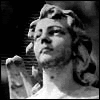While documentaries like An Inconvenient Truth and The Great Global Warming Swindle (watch Part 1 of 8 below) attempt to endorse or criticize (respectively) the theory that mankind is responsible for global warming, one thing is for certain: you can save a lot of money by doing a few simple things around the house to conserve energy.
Here are a few things that I found particularly interesting:
The city of Lindas in Sweden built 20 terrace houses with excellent windows, better insululation, and an air-to-air heat exchanger. These features added about $7,000 to the cost. However, they were able to dispense with the heating system altogether, at a savings of $4,000. This leaves a net cost of $3,000 for the extra insulation, and a simple payback of under four years, and free heating for the remainder of the life of the house. More information about project's design can be found in this PDF file.
Ever wondered how much electricity an appliance actually consumes? Well you can use a Kill-A-Watt meter to determine it. For those of you living in Ottawa, you can borrow one of these meters from the Ottawa Public Library.
Solar ovens use concentrated sunshine to cook food. Apparently, you can buy fancy solar ovens for as much as $250 or you can build your own for as little as 20 bucks to give it a try.
By now, you're probably wondering why I titled this post 'Power Vampires.'
The handbook describes 'Power Vampires' as electrical devices that continuously draw power from your power outlets, even when not supplying any useful service. Those power adapters (black power bricks) you can find all over your house draw power even when the item is not in use. For example, even though a halogen desk lamp's bulb is rated at 20 watts, the total lamp consumption is 25 watts, since the power brick draws 5 watts. Over the course of a year, the lamp will consume more power while it's off than while it is on.
Your home can have numerous power vampires lurking: TV's, cable boxes, modems, satellite receivers, VCRs, DVD players, computers, cell phone chargers, battery chargers, night lights, etc. Any equipment that stays warm after it has been turned off for a while is most likely a power vampire as well.
The Handbook states that a recent study found that these vampires accounted for 5-20% of total power consumption, even exceeding the traditionally highest user (the fridge) in some homes. The simplest way to get rid of these power leechers is to unplug them when not in use. More convenient are power bars in which you can lay one or more of these bricks to rest.
The Carbon Buster's Home Energy Handbook: Slowing Climate Change and Saving Money


No comments:
Post a Comment